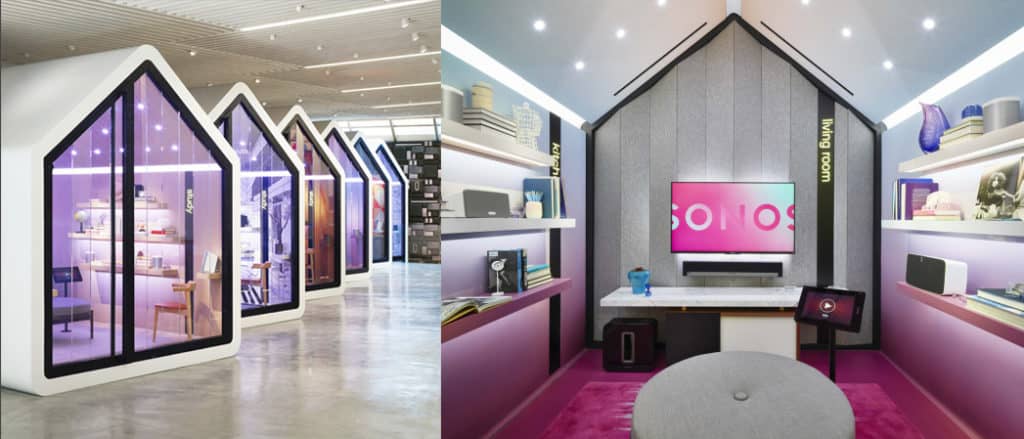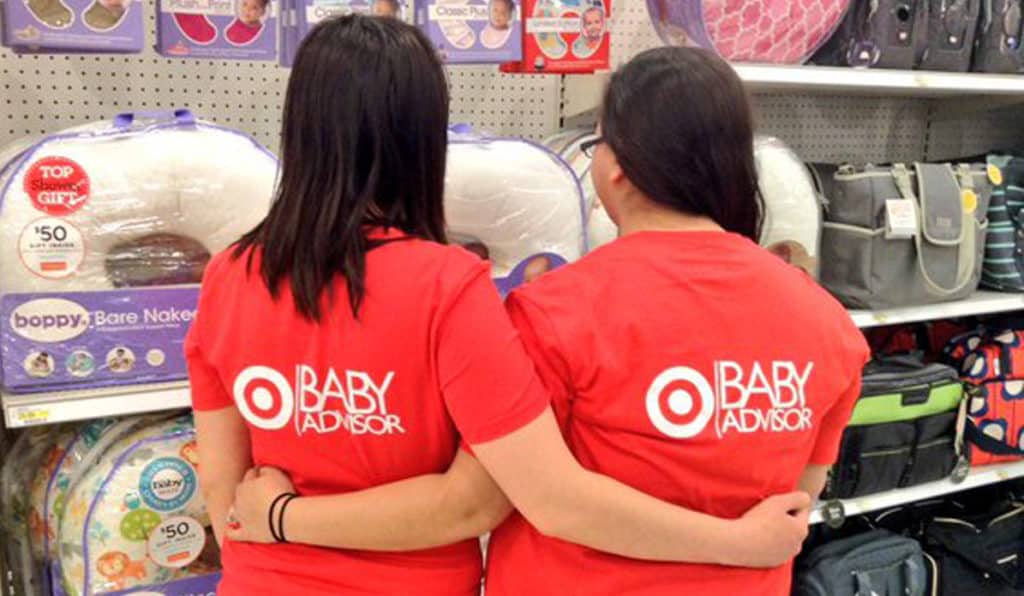In the midst of what’s been called the “age of the customer,” the companies with the biggest competitive edge are those that are evolving their practices to meet the needs of the modern, technology-empowered consumer. One of the leading requirements? An outstanding customer experience at every point of contact.
Technology has given companies the chance to connect with their consumers in all kinds of amazing new ways, and those same digital advancements have also handed businesses oodles of information about the people who purchase from them. As a result, customers are more in tune than ever with brands and the products they love. What’s interesting however is that as plugged-in as the general consumer is, the companies that sell to them sometimes just aren’t.
We see it a lot. In our age of endless data, many businesses have lost sight of something really important about their customers: that they’re human and crave personal connection. The way we see it, fixing the problem means connecting with audiences on an emotional level, tapping into their deepest motivations and desires. And functionally, that means building relationships.
Think of it like this: If you’re in a relationship with someone—your significant other, your best friend, your mentor—you’re going to listen to them, hear what they have to say, and show that you’ll at least try to understand what they want. Then you’re going to do your darndest to interact with them in a way that aligns with those needs…because you want the relationship to continue. It works the same with consumers. On the whole, people no longer rely on factors like price and product features alone to make their purchasing decisions. Now, it’s all about the experience. And creating a positive one doesn’t just happen by accident. It requires thought. Empathy. Creativity. And a dedication to cultivating a real, human relationship. The companies with the best customer experience have made all of these things critical components of their brand strategies — and it shows.
So, how do you build customer experiences that keep people coming back for more? Here’s ten killer pieces of customer relationship advice to get you started:
1. Create the context for an experience design.
Our surroundings shape our experiences. That’s why companies are working to create environments that help customers see products in context: to get them as close to the real-life experience as possible. Customers don’t want to just see a product or learn about a service, they want to be able to test it out, use it as they would when they bring it home and take it out of the box — or at least be able to clearly envision themselves doing that. Sonos used this principle to guide the entire design of its new flagship store in New York City. There, customers are encouraged to test out the sound the company’s speakers deliver inside several different “pods” which are really just clever, acoustically sealed proxies for rooms in different types of homes. It’s pretty smart: People tend to purchase products and services that fit into their lives and whatever situation they’re in. Creating the ultimate instance of show and tell “shows” customers what they’ll get if they buy, making their leap to purchase that much smaller.

2. Be A Trusted Advisor
It’s a given that employees should be engaging, knowledgeable, and readily available to assist customers at all times. However, it’s where the focus of that energy lies that can set one company’s customer experience apart from another. Staff shouldn’t be focused exclusively on selling stuff; they should instead concentrate their energy on forming the customer relationship. How? By acting as more of a guide than a salesperson – a trusted advisor who’s on the customer’s side and has all the information necessary to help. Discount retailer Target provides a clear example of this principle. In addition to their regular sales associates, Target staffs stores with dedicated department experts, including a “Baby Advisor.” That position, for example, provides guests with personalized — and honest — info about baby products, as well as advice to help them make the best choices. It’s a value-creation mindset, one that educates and empowers customers, rather than simply selling to them.

3. Start The Club
A great brand is like a club you want to join—it fulfills not only a customer’s needs with products or services, but done well, it can represent who they are in terms of beliefs and attitudes. It’s not about making people feel like outsiders. Instead, it’s about capitalizing on the very human desire to participate and not miss out on something special. Create your club, er, brand, and you’re creating a sense of belonging — and loyalty.
Here’s another thing though: Not everyone is going to want to join your club. And that’s a good thing. Because you simply can’t be everything to everyone. The companies that have the edge are the ones that know this, and have pinpointed potential club members as their target audience. With that information in mind, they can then make sure their brand and their customer experience says and does just the right thing for that very specific group.
4. Be Unexpected
People expect certain baseline things, whether they’re physically shopping in a store, or online. So when your customer experience rises above that, customers are pleasantly surprised. The great thing is it can be something simple like upgrading packaging, or more complex like implementing the latest technologies. Both create delight, which makes for engaged customers. Remember that this isn’t excitement for excitement’s sake however. A surprising element has to add value or it’s empty, and may fall flat.
Consider how Lowe’s, the home improvement company, has been gaining competitive advantage in creating killer customer service through its use of technology. One of their Innovation Lab’s latest introductions is the LoweBot (the new iteration of their pilot program OSHbot) created in partnership with Fellow Robots. An “autonomous retail service robot,” LoweBot can answer simple customer questions and guide them to items in the store. It can also assist with inventory monitoring in real-time. Bonus: This all frees up employees to spend more time with customers that need their in-depth expertise.
5. Use Data To Get Intimate
Having good customer data can accomplish some great things, like helping companies tailor their customer experiences and deliver relevant and meaningful offers. First and foremost, this type of information can be a tool to get to the point faster — it helps filter product selections or service offerings, narrowing them down to the options that best fit the customer’s likes and needs. Further, intuiting what they want shows that you’re a good steward of their time and are mindful of the fact that they have better things to do than parse through dozens, or even hundreds of selections.
But you also have the opportunity to use that data to probe a little deeper. People are only capable of expressing so many of their needs, and sometimes customers don’t even know what they need. Data can help reveal this information and help companies better understand consumers. Take the Lowe’s Hologram Experience, for example. Another technology innovation from Lowe’s Innovation Labs, here Microsoft’s Cortana AI service predicts customer tastes for kitchen renovations using information on their Pinterest boards, then AR/VR based tools help them envision how their dream room will really look. Data compiled from customer feedback during the virtual reality experience (amount of time spent looking at different elements, key phrases mentioned, etc.) helps to improve future predictions.
6. Build A Hive
The majority of online content today is user-generated, and that crowd-sourced glut of information can be more influential to customers than conventional marketing and advertising. But who should get the ball rolling with regard to people talking about and advocating for products and services? Oftentimes brands themselves need to be the ones to start the conversation. We think of this as building a hive for busy consumer bees, offering a home to support loyal customers living, breathing — and importantly, buzzing about — your brand.
The platforms are already there, you just need to encourage your customers to use them, and make it easy for them by providing guidance on what kinds of content they should create and share. Start up the engine by communicating. Ask them for their opinions. Create a campaign and provide the hashtags. And offer rewards and incentives to stimulate participation. Then interact with them and continue the dialogue. In turn, you’ll get valuable feedback, but you’ll also get the opportunity to see if what you want people to say about your company and what they’re actually saying are synonymous. That alignment is the bedrock for growing your community.
7. Prepare for the journey.
Transparency and openness are important to maintaining positive relationships with your customers — you want them to know what they can expect from your products and from the purchasing experience. This includes everything from pricing and payment policies to accurate timelines of product and service delivery, and even what to expect regarding customer support after a purchase is made.
A roadmap for your customers’ engagement with your company, end-to-end, likely already exists. But when you let buyers in on it and prepare them for that journey, you enhance their experience across the board. An analogy might be a business meeting: it’s easy to get off track, leave everyone confused about next steps, and feel like a complete waste of time despite all the effort. That’s why agendas exists, so people know what to expect and how to prepare. Give your customers one, too.
8. Empower employees.
An empowered employee is one who is given the autonomy to make decisions in the workplace, including the resources and responsibility to do what they see fit to keep customers happy.
The luxury hotel brand Ritz-Carlton has mastered this principle. Employees are given $2,000 of discretionary funds (per employee, per guest) to resolve customer complaints. It’s the employee’s choice what they spend the cash on, and while it’s not always necessary, its benefits are clear. Not only do staff have the ability to quickly correct whatever has negatively affected a customer’s experience (no need to wait on an endless chain of manager approvals), a gracious act helps set the tone for a great relationship. On the flip side, when employees know they have the ability to exercise their own judgment regarding customer service, they’re more inclined to act with flexibility and generosity — and customers can feel that. The funds aren’t just for problematic situations either. It can be used to send champagne to a guest’s room on a special occasion, for example; whatever it takes to ensure an outstanding experience.

9. Make it seamless.
In today’s multichannel consumer market, it’s important to create a customer experience that is consistent across all the ways people will interact with your company, whether that’s face-to-face or digitally. The key is to make sure all your experiences align. Your retail checkout process, for example, should be as quick and seamless as customers have grown to expect of your online checkout experience. At stores like Apple and Warby Parker, for instance, sales associates carry tablets as POS devices, enabling them to ring up sales wherever and eliminating the hassle of waiting in line at a register. The thing to keep in mind however is that you don’t have to silo your processes. If there’s a digital tool that can positively impact the customer experience, then by all means use it.
10. Personalize based on personality.
People are all wildly different. Even people within your established target audience groups. They may have similar interests and needs, but no matter what segment they belong to, individuals will differ in their communication styles, thought processes, and approach to making decisions. This means they also want different things from your brand, including varied levels of engagement. Meet them where they are—by adapting to their purchasing personalities.
In person, it’s about reading a customer’s signals and reciprocating with the right experience. Are they aggressive or docile? Do they just want the facts, or start a conversation and build a rapport? Or do they not want much interaction at all, and all you need is to establish presence and say, “Hey, I’m here if you need me?”
In the digital space, you don’t always have the advantage of a face-to-face meeting, so finding ways to personalize the experience is your secret weapon. Maybe it’s offering live chat on your website, or tailoring sections of the site with messaging that will appeal different personality types. It all comes back to a core component of a successful relationship: listening to what your customers are telling you, and then responding appropriately.
No matter how much consumer behavior has changed—or continues to change—as technology changes, well, everything, the foundation of an exceptional customer experience will forever stay the same: acknowledgement that customers…they’re people. Know them. Understand them. Work to fulfill their needs (even the ones they don’t even realize they have). Listen to them. Connect. Build a relationship. Do that, and their experience knowing your company will be a lasting one.







